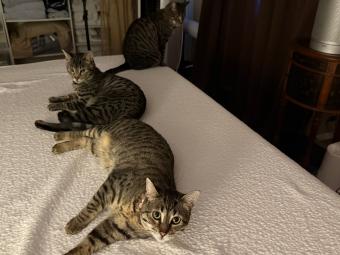
Scattergories will really test your quick recall skills with its timed, concentration-style gameplay. Introduced in the late 1980s when trivia and mind-games were all the rage, Scattergories is still manufactured today and played in households around the world. However, not every family plays Scattergories exactly the way it should be played; take a minute to see if you and your family are Scattergories purists or play your own custom version of the game.
Scattergories Gets Its Start
Originally published by Parker Brothers in 1988, later attributed to the Milton Bradley division of Hasbro Inc. when it bought Parker Brothers, Scattergories is a category-based game best played in semi-large groups. Throughout the game, players focus on coming up with unique answers to a category that all start with the same letter. Players do so under a short time limit, and can only receive points for all of the answers that they come up with that don't match other people's responses. Ever since its release in the late '80s, Scattergories has remained one of people's favorite party games to pull out.
Scattergories' Contents
Inside the Scattergories box, you'll find a couple of different contents. If you find a vintage copy of the game somewhere, make sure to check that you have all of the pieces that are included, as well as make sure that you have two AAA batteries on-hand as you'll need these for the timer.
- 1 set of instructions
- 1 die rolling board
- 1 timer
- 6 folders
- 6 pencils
- 6 clip strings
- 1 answer pad
- 48 category cards
How to Play Scattergories
Scattergories is a super easy game to follow once you understand the rules. To start a round, you should dole out one of the folders to each of the players. Inside of these folders should be an answer sheet, a pencil, and 8 different category cards. Once everyone has a folder, you should agree on which category number (#1-#16) you're going to follow. From here, one of the players rolls the die to see which letter everyone has to start their answers with.
Once the letter's been called out, the person who rolled the die can set the timer on the 3-minute setting and turn it on. Everyone should race to put down as many answers as they can within that 3-minute time limit in the first round section of the answer sheet. As soon as the timer goes off, everyone has to immediately stop writing. Starting with the player who rolled the die and then going clockwise around the group, each player reads out the answers that they wrote down. For every answer that you've written, which is said, you cross it out. Once all of the answers have been called out, players receive one point for every answer they've written down that hasn't been written by anyone else, and then continue the same gameplay for two more rounds with two different letters.
How to Win the Game
After the three rounds are completed, the player with the most points wins the game.
Rules for Acceptable Answers
Just like with the way you have to follow the Scrabble dictionary when you're playing the popular word game, you also have to abide by a few rules when it comes to your Scattergories answers. Not every response that you come up with on the fly will probably be acceptable, but an easy way for you to make sure that you don't flub your answers during a round is to familiarize yourself with all of the rules at play.
- Your answers can only start with the letter that was rolled on the die.
- Articles such as "a," "an," and "the" can't be used as the keywords, but can be included in the response. For example, for a round using "P" you can respond with The Polar Express.
- You're not allowed to give the same answer for multiple categories in the same round.
- Either the first or second word in a proper noun is permitted, such as responding with Barack Obama or Bush, George for a President's category with the letter "B."
- If you disagree with someone's clever or crafty answer, you can challenge their response. Once a response is challenged, each of the players gets to vote on whether they think it's acceptable or not and majority wins.
Use a List Generator to Switch up Your Game
After you've played Scattergories a few times, you might start to get tired of coming up with answers for the same categories over and over again. This is where a Scattergories list generator can really keep you on your toes and make the game interesting for years to come. You can use the same answer sheets and timer that the game comes with, but digital tools can scramble together new lists for you that have categories that weren't originally included in the game's first edition. Bring the late '80s game into the 21st century with these custom and quirk category lists.
Scatterbrains Can Win at Scattergories Too
Since Scattergories doesn't require any special knowledge or skills, it makes for a perfect party game or addition to your family game night. After all, even scatterbrains can win at Scattergories too.







